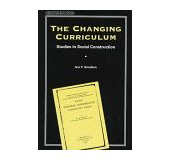The Changing Curriculum: studies in social construction
Chariots of Fire
Hamilton contends that 'the 'class' pedagogies pioneered at Glasgow University had a direct influence on those adopted in the elementary schools of the 19th Century' (Hamilton 1980, p. 282). The general connection between 'class' pedagogies and a curriculum based on sequence and prescription is clear but to move towards the 'modern' duality of pedagogy and curriculum involves the transition from class to classroom system.
In analysing the historical transition from 'class' to classroom system the shift in the initial stages of the Industrial Revolution in the late 18th and early 19th Century 'was as important to the administration of schooling as the concurrent shift from domestic to factory production was to the management of industry'. Indeed, as Smelser has shown the two were intimately related;
'in the pre-industrial family of a craftsman, the parents themselves are responsible for teaching the child minimum occupational skills, as well as for his emotional moulding during his early years. When a growing economy places demands for greater literacy and more technical skills, the pressure is for this multi-functional family to give way to a new, more complex set of social arrangements. Structurally distinct educational institutions appear and the family begins to surrender some of its previous training functions to these new institutions, having lost these functions, accordingly, the family becomes more specialised, focusing relatively more on emotional conditioning in the early childhood years and relatively less on its former economic and educational functions' (Smelser 1968, p.79).
In the 'domestic-putter out' system then the family unit remained at home and education, albeit rather more in the guise of training and apprenticeship, could therefore take place in the home. With the triumph of the factory system the associated break-up of the family opened up these roles to subsequent penetration by State schooling and to their replacement by the classroom system where large groups could be adequately supervised and controlled. Hence 'the change from class to classroom reflected a more general upheaval in schooling - the ultimate victory of group-based pedagogies over the more individualised forms of teaching and learning' (Hamilton 1980, p. 282).
